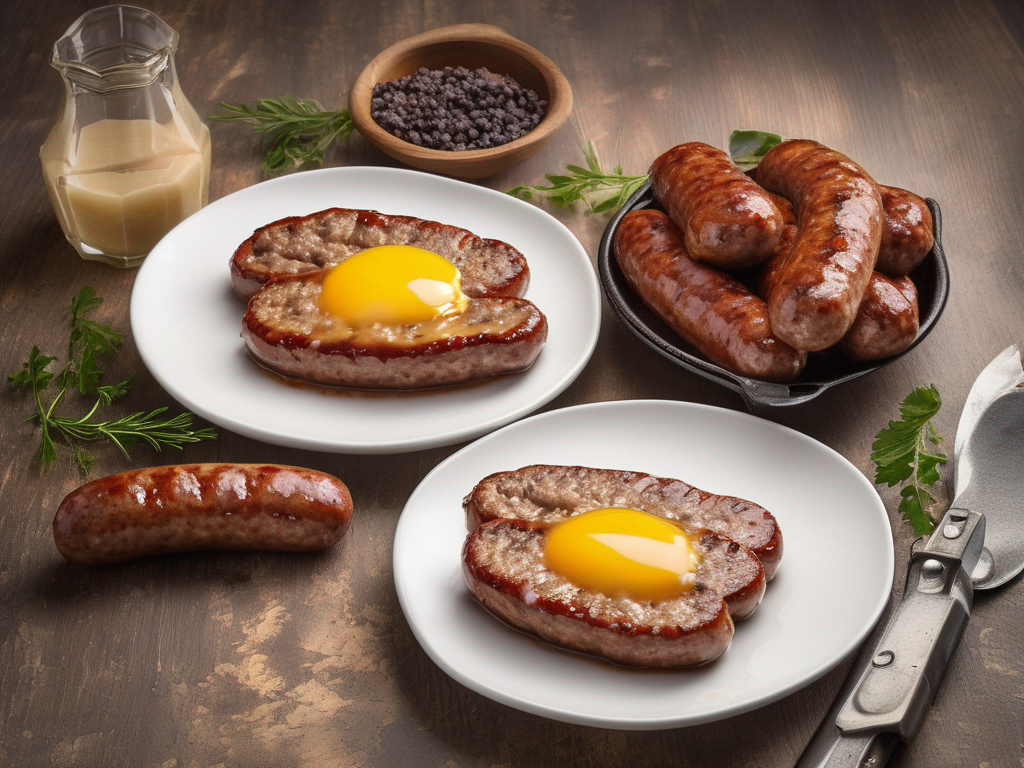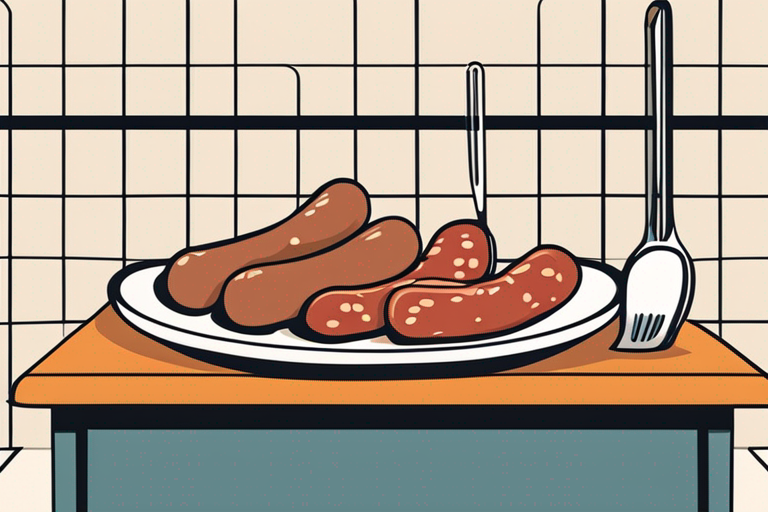
The Ultimate Guide to Storing Cooked Breakfast Sausage Leftovers
Get Your Free Food Safety Cheat Sheet
30 most common foods with instant answers. Print it and stick it on your fridge—completely free!
The Ultimate Guide to Storing Cooked Breakfast Sausage Leftovers
When it comes to storing cooked breakfast sausage leftovers, proper food safety practices are crucial to maintain freshness and prevent foodborne illness. Whether you have leftover sausages from a hearty breakfast or a brunch gathering, knowing the right techniques for storing them can make a significant difference in extending their shelf life. In this comprehensive guide, we will explore effective ways to store cooked breakfast sausage leftovers for extended freshness. (Cooked breakfast sausage leftovers)
Why Proper Storage is Important for Cooked Breakfast Sausage Leftovers
Proper storage of cooked breakfast sausage leftovers is essential for several reasons:
-
Prevent Food Spoilage: Improper storage can lead to the growth of harmful bacteria, causing food spoilage and potentially leading to foodborne illnesses.
-
Maintain Flavor and Texture: Storing cooked sausages correctly helps retain their flavor and texture, ensuring that they remain enjoyable to eat.
-
Reduce Food Waste: By storing leftovers properly, you can avoid unnecessary food waste and make the most of your cooked sausages.
Best Practices for Storing Cooked Breakfast Sausage Leftovers
Refrigerating Cooked Breakfast Sausage Leftovers
When it comes to refrigerating cooked breakfast sausage leftovers, follow these guidelines to ensure their freshness:
-
Cool Down Properly: Allow the cooked sausages to cool down to room temperature before refrigerating them. Placing hot food directly in the refrigerator can raise its temperature and promote bacterial growth.
-
Use Airtight Containers: Transfer the cooked sausages to airtight containers or resealable bags to prevent them from absorbing odors and moisture from the fridge.
-
Label and Date: Remember to label the containers with the date of storage to keep track of the freshness of the leftovers.
-
Store in the Fridge: Place the sealed containers of cooked sausages in the refrigerator at a temperature below 40°F (4°C) to maintain their quality.
Freezing Cooked Breakfast Sausage Leftovers
If you want to extend the shelf life of your cooked breakfast sausage leftovers, freezing is a great option. Here's how you can freeze them effectively:
-
Wrap Individually: For easy portioning, consider wrapping the cooked sausages individually in plastic wrap or foil before placing them in a freezer-safe container.
-
Remove Air: To prevent freezer burn, make sure to remove as much air as possible from the packaging before sealing it.
-
Label Clearly: Label the frozen cooked sausages with the date of freezing and use them within a recommended timeframe for the best quality.
-
Thaw Safely: When ready to use, thaw the frozen sausages in the refrigerator overnight or use the defrost setting on your microwave.
Reheating Cooked Breakfast Sausage Leftovers
When reheating cooked breakfast sausage leftovers, follow these safety tips to ensure they are heated properly:
-
Heat Thoroughly: Make sure to heat the sausages thoroughly until they reach an internal temperature of 165°F (74°C) to kill any bacteria present.
-
Avoid Reheating Multiple Times: To maintain food safety, avoid reheating the same batch of sausages multiple times. It's best to reheat only the amount you plan to consume.
Safety Tips for Handling Cooked Breakfast Sausage Leftovers
When handling cooked breakfast sausage leftovers, keep these safety tips in mind to prevent foodborne illnesses:
General Food Safety Tips
-
Wash Hands: Always wash your hands before and after handling food to prevent the spread of bacteria.
-
Separate Raw and Cooked Foods: Avoid cross-contamination by keeping raw and cooked foods separate during storage and preparation.
Signs of Spoilage
-
Check for Off Odors: If the cooked sausages have an off smell or appear discolored, it's best to discard them.
-
Inspect Texture: Spoiled sausages may have a slimy texture or show signs of mold growth. Discard any leftovers with these characteristics.
Conclusion
Proper storage of cooked breakfast sausage leftovers is essential for maintaining their freshness and flavor. By following the guidelines outlined in this guide, you can safely store, freeze, and reheat your leftover sausages without compromising their quality. Remember to always prioritize food safety when handling cooked leftovers to enjoy delicious meals while minimizing food waste. For more tips on food safety and storage, visit [cooked breakfast sausage leftovers](/food/cooked breakfast sausage leftovers). (Cooked breakfast sausage leftovers)
Related Posts
Here are some other articles you might find helpful:
- Expert Tips for Repurposing Cooked Breakfast Sausage Leftovers
- How to Reheat Cooked Breakfast Sausage Leftovers Without Drying Them Out
- How to Properly Store Cooked Breakfast Sausage Leftovers
- Creative Ways to Repurpose Cooked Breakfast Sausage Leftovers

Authoritative Food Safety References
These agencies and university labs inform every tip and health precaution we publish.
USDA FoodKeeper – Cold Storage Guidelines
Official refrigerator, freezer, and pantry timelines maintained by the U.S. Department of Agriculture.
Visit USDA FoodKeeperFDA Produce Safety Rule & Grower Guidance
Field-to-fridge handling practices that prevent contamination of fruits, vegetables, and leafy greens.
Visit FDA Produce SafetyCDC Foodborne Illness Prevention Hub
Surveillance-backed guidance on pathogens, symptoms, and steps to reduce foodborne illness risk.
Visit CDC Food SafetyUC Davis Postharvest Technology Center
University research detailing optimal storage atmospheres for produce after harvest.
Visit UC Davis PostharvestPenn State Extension – Home Food Preservation & Safety
Peer-reviewed extension bulletins on safe canning, chilling, and reheating practices.
Visit Penn State ExtensionCan cooked breakfast sausage leftovers be frozen?
How should cooked breakfast sausage leftovers be reheated?
Can cooked breakfast sausage leftovers be eaten cold?
How can I tell if cooked breakfast sausage leftovers have gone bad?
Get Your Free Food Safety Cheat Sheet
30 most common foods with instant answers. Print it and stick it on your fridge—completely free! Want more? Upgrade to the complete guide with 70+ foods.
Scan your food directly and get instant safety info using our AI-powered camera feature.